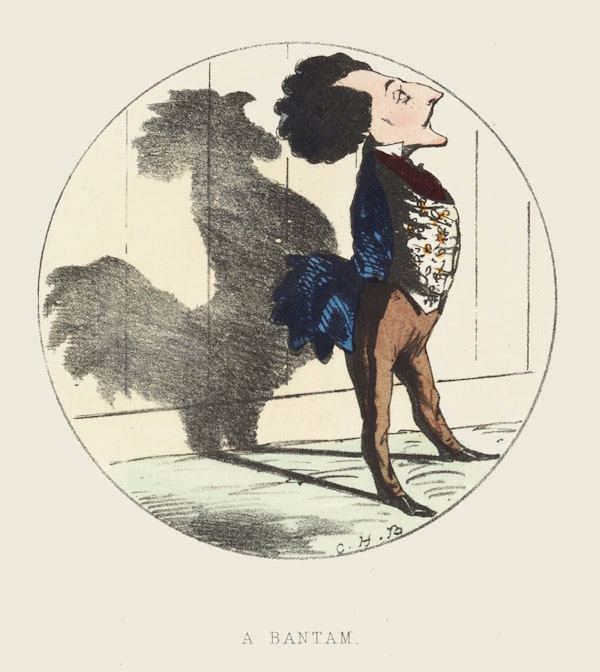
Finnegan, Begin Again
Sometimes, it takes a while to get through a book, but 28 years? Well, if it’s James Joyce’s Finnegans Wake, maybe 28 years is kind of impressive. Via the Orange County Register:
Once a month for the past 28 years, filmmaker Gerry Fialka has convened a book group to read James Joyce’s “Finnegans Wake,” a book that is famously difficult to understand.
This Tuesday, Oct. 3, Fialka’s Venice-Wake group, which he launched at the Venice branch of the Los Angeles Public Library in 1995 and has continued on Zoom since the pandemic, will reach the book’s final page.
That’s dedication!
But the group’s deliberate pace meant they weren’t going to zip through it. “We do one page and then discuss it for two hours,” he says, and laughs. “That’s why it’s taken us 28 years.”
Its incomprehensibility was part of Joyce’s plan.
“Many scholars say that Joyce’s intention wasn’t to give readers a straightforward experience, or to tell them a straightforward story, but to give them an experience of feeling kind of at a loss, like characters do when they’re in a dream. And so that often means it’s incomprehensible because we experience life and dreams as incomprehensible,” said Coogan, a researcher for nonfiction film.
Are they done?
“No, we’re never done. The same thing will happen next month,” he says. “We’ll read page three again next … There’s nothing different really.”
One can spend years and decades deciphering Joyce. One great podcast was “Re:Joyce,” by Frank Delaney, that went through Ulysses sentence by sentence. Alas, Delaney did not get to finish the book—he passed away in 2017.
Banned on the Run
Book-banning has alas been in the news recently, and as lamentable as it is, we do take some pleasure in the fact that people still see enough power in the written word to feel that books are “dangerous” enough to justify banning. But still…
Anyway, it probably won’t surprise anyone to know that book banning has a very long history. But what was the world’s first banned book? It’s probably impossible to determine, but Mental Floss has a go. At least in terms of America, their candidate is Thomas Morton’s 1637 book New English Canaan and the banners were—quel surprise—the Puritans.
It was a searing indictment of conservative Puritan life, which Morton had brushed up against after moving to Massachusetts in 1624. Compared to the entrenched and reserved culture of the area, Morton was a hedonist who liked to party. (As much as one could party at that time, anyway. Dancing around a pole for May Day was considered risqué.) He also was friendly to Native Americans, which Puritans did not like. He was eventually ostracized from the area, and later filed a lawsuit over his forced relocation.
Even further back in history, it wasn’t enough to just ban books:
Between 259 BC and 210 BCE, Chinese emperor Qin Shi Huang executed 460 Confucian scholars by burying them alive—the idea being that it’s easier to prevent authors from writing things in the first place if they're dead. In 35 CE, Roman emperor Caligula—certainly a man of strong moral stuff if ever there was one—discouraged people from reading Homer’s The Odyssey because it could give them a taste of what it meant to be free. In modern times, killing writers became frowned upon.
Well, let’s ask Salman Rushdie about that.
Graphene Nails It
Was it a good week for graphene news? It’s always a good week for graphene news! Graphene-infused packaging that will reduce the direct plastic consumption of nail packaging. From (who else?) Graphene-Info:
Gerdau Graphene, in collaboration with Gerdau (its parent company and a major Brazilian steel manufacturer), has unveiled graphene-infused packaging for Gerdau’s nail product line manufactured at three facilities in Brazil. Utilizing the new packaging is expected to reduce Gerdau’s direct plastic consumption by around 25%, or more than 72 tons per year.

While Gerdau's nail products are known for their 100% recyclable steel composition, the newly-developed packaging by Gerdau Graphene enhances its sustainability profile. Apart from the significant mechanical property improvements that include a 25.3% reduction in packaging weight and thickness and 39% decrease in perforations in the nail packaging (due to its tensile strength), the packaging also underscores a commitment to reducing energy consumption and greenhouse gas emissions.
DEC the Halls
Many of the companies that were integral to the development of computing technology were ephemeral—Bell Labs developed the transistor, Fairchild Semiconductor the integrated circuit—and yet they are no longer. (And as Frank points out in today’s video, Xerox PARC created so many of the computer technologies you are probably using right now.)
Another major player in the history of computing was Digital Equipment Corp. (DEC). Founded in 1957 by Ken Olsen, Harlan Anderson, and H. Edward Roberts, the company cut its teeth developing “minicomputers,” a lower-cost alternative to mammoth mainframes which basically defined “the computer” at the time. Ars Technica takes up the story:
In 1977, DEC introduced the VAX, a new line of minicomputers that featured a 32-bit instruction set architecture and virtual memory. Its operating system, VMS, was a multi-user, multitasking OS that provided features we now take for granted, including virtual memory, file sharing, and networking. It amassed a wide variety of third-party software packages that made it the most popular system in its class.
That’s really the key to any hardware platform: the availability of software that runs on it.
The VAX served DEC well throughout the ‘80s and into the ‘90s, but as the latter decade went on, DEC began to face stiff competition from UNIX vendors, particularly Sun Microsystems. DEC struggled to change with the times, and the company ultimately failed. In 1998, DEC was acquired by Compaq, and in 2001, Compaq was acquired by Hewlett-Packard. The DEC line, including the VAX/VMS system, was discontinued and faded from the market.
But the DEC VMS legacy lives on today, particularly if you are running Windows.
In 1988, a senior VMS engineer named David Cutler joined Microsoft to lead the development of the Windows NT operating system. Windows NT was a major departure from previous Microsoft operating systems, as it was a 32-bit, multi-user, multitasking OS. Windows client, still finding its way to usability, was a 16-bit layer that ran over MS-DOS. It wasn’t really an operating system; it was more like a program launcher.
Windows NT debuted in 1993 at the same time as the desktop version of Windows 3.1, and although unsuitable for a desktop machine, NT found life as a server operating system.
Each of these Windows versions begat later versions: Windows 3.1 begat Windows 95 (remember when people queued up to buy that?) then Windows 97. NT begat version 3.5, which begat version 4.0, which eventually begat Windows 2000. In 2001, Windows XP merged both desktop and server versions into one line based on NT.
From there, Windows XP begat Windows Vista (ha!), Windows 7, Windows 8, Windows 10, and, finally, Windows 11, where Windows is now.
Green saw the resemblance right away. “There definitely were some similarities between NT and VMS,” he said. “The permissions systems, file protection mechanisms, privileges and roles—those were some security concepts integrated into VMS that were unique at the time but incredibly useful and configurable. NT implemented very similar paradigms, and it definitely makes sense, now, knowing the heritage.”
… How much of the original Windows NT 3.1 code written by Cutler and his team more than 30 years ago remains in Windows 11 is unknown. Recent versions of Windows for both client and server have shed 16 bit application compatibility, and this was definitely a function found in Windows NT 3.1 to version Windows 2000. Back in the early to mid-'90s, most applications were 16-bit, and 32-bit only began to creep into the market later in the decade.
DEC may be gone, but nothing disappears forever.
Language Learning
Are you dyslexic? Do you know someone who is? If so, a new typeface is aiming to help make reading easier. Says Promova:
Today, during Dyslexia Awareness Month, Promova announces that Dyslexia Mode is live across the web and mobile versions of their language platform. Learners with dyslexia can now use Dysfont, a specialized typeface developed by talented dyslexic designer and TEDx speaker, Martin Pysny, to assist with language learning.
It has been estimated that 10–20% of people around the world are dyslexic—comprising 80–90% of all people with learning disabilities, according to the Yale Center for Dyslexia and Creativity.
“Our mission at Promova is to help people worldwide achieve their language learning goals and, through this, live a fulfilling and happy life. Partnering with the Dysfont team to create Dyslexia Mode was a natural step for us. With this partnership, we aim to make it easier for dyslexics to learn new languages and raise awareness about the challenges learners with this condition face. Together, we hope to help reduce the impact that learning disabilities have on people’s lives.”
Martin Pysny has been working Dysfont for about nine years.
This specialized font addresses the main challenges dyslexics face when working with text. First, varying ways to write the same letter in uppercase, lowercase, serif, sans, italic, or bold can make dyslexics perceive it as a different letter. Dysfont addresses this by making these versions as similar as possible. Second, dyslexics can easily confuse the letters p, q, b, and d, so Dysfont distinguishes these more.

Not being dyslexic, we can’t confirm its efficacy, but if you are, click through to Pysny’s demonstrations and see if it helps.
Helmet Call
One challenge for deaf and hard of hearing athletes is hearing play calls, or other verbal instructions from coaches. To help rectify that, AT&T and Gallaudet University—the global leader in bilingual education for deaf and hard of hearing students—have teamed up to develop an AR-powered football helmet that features a screen that allows players to see play calls in American Sign Language (ASL). Says AT&T:
The helmet will allow coaches on the sideline to select a play from a tablet that will send the play to a lens inside the helmet. The quarterback wearing the helmet will receive the play in augmented reality on the digital display located within the visor. AT&T 5G provides the reliability and low latency for plays to be sent and received at a speed that keeps up with the pace of the game.
By displaying the coach’s play through augmented reality (AR), this technology eliminates a gap for deaf and hard of hearing athletes, making football more inclusive. It can also reduce miscommunication and unwarranted penalties.
The helmet was used for the first time in NCAA Division III competition during Gallaudet’s home game against Hilbert College on Oct. 7.
The applications for a 5G-connected helmet have reach beyond college football—it could open possibilities of inclusion for any sport that requires helmets. But even more possibility exists in any environment where there’s a need for a helmet and instant communication. Could a 5G-connected helmet improve safety on construction sites or for first responders? And even potentially lead to more job opportunities for the deaf community? We’ll continue to work with partners to explore how this technology and software can be more widely adopted and create meaningful change, both in sports and beyond.
How it works:
Shadow Play
The famous intro to the old radio show The Shadow began, “Who knows what evil lurks in the hearts of men?…The Shadow knows!” In 1856, Charles H. Bennett published a book of illustrations called Shadowswhich featured people with goofy, strange, or eerie shadows. From the Public Domain Review:
Charles Bennett instilled his finest drawings with the antics of puppetry, bursting with frantic noise and movement in a tightly controlled space. In the title-page illustrations for his books, and in most of the more than two hundred drawings he did for periodicals, the characters spill out beyond the margins. Many of Bennett’s shadow satires rely on the visual vocabulary of animals to cast shade on his subjects. A vain old woman is rendered into a self-admiring parrot; a young woman is belittled by the shadow of a “Little Duck”; a leering man projects the menacing shadow of a greedy crocodile.

Originally published as individual graphics for Fleet Street bookseller David Bogue’s Illustrated Times, Bennett’s caricatures were reprinted in a number of expanded editions, popular due to a simple and ingenious magic-lantern conceit: that the shadow thrown by a spotlit individual can reveal her inner character.

Pretty cool.
Pin It
Consider the push pin. Simple, effective. Invented in the 1750s but not patented until 1900, it’s a design that has not changed fundamentally in centuries. After all, how could the push pin be improved upon? Well, via Core 77, you can make them fun. Which is what Italian industrial designer Fabio Verdelli did with his Jellyfish design.

Verdelli writes on his website:
Jellyfishes sting. Pushpins as well. But this one is gentler. She is soft (even if she hides a secret and biting core). She is transparent, but not fully: exactly as a marine animal wondering amongst currents. She is colored, but only subtly. As if she was not that convinced. With detachment. Like a light touch. Like a cloud shaped jellyfish’s touch. ‘Jellyfish’ the pushpin is the first product of Fabio Verdelli Milano, the product design brand by Fabio Verdelli | Design Studio.
Wait’ll this guy gets his hands on a stapler.
Pet Sounds
Here’s a phrase one doesn’t come across very often: “partnership between the orchestra and an organic free range chicken farm.” Say what?
Yes, apparently the New Zealand’s symphony orchestra wrote and performed an original composition for chickens. Says The Guardian:
The bespoke piece of music – Chook Symphony No 1 – was created specifically for the birds out of an unlikely partnership between the orchestra and an organic free range chicken farm which wanted a piece of chicken-friendly music to enrich its flocks’ lives.
And “chicken-friendly” seems to mean “traditional baroque music” (who knew?) with some more chicken-specific sounds.
The composer, Hamish Oliver, who used the baroque tradition as a starting point and drew inspiration from composers such as Corelli, Bach and Schnittke, wanted the piece to be playful by including sounds from a chicken’s world. “The trumpet imitates the chicken … the oboe and bassoon are the cluckiest of the wind instruments, especially if you take the reeds off.”
You’re gonna want to put the coffee down before hitting Play on this:
“We’ve been playing classical music for the chickens for some years now, because it is well researched that [it] can calm the chickens down,” says Ben Bostock, one of the two brothers who own the Bostock Brothers farm.
Good thing they’re sticking with classical music; now the farm can market John Cage-free eggs.
A Fishy Tale
If you happen to be walking through a river or in a lake and someone yells “Piranha!” it’s a safe bet you’re going to get out of the water pretty quickly. The thing is, though, you may not really have to.
Like the generally benign tarantula, the piranha has gotten a bad rap, largely thanks to Theodore Roosevelt. Rather than being the aggressive, voracious predators that can skeletonize a cow in seconds, they’re actually fairly passive and most species tend to be carrion eaters rather than active hunters.
Via Laughing Squid, TED-Ed lesson written by zoologist Antonio Machado-Allison and narrated by Addison Anderson explains piranha behavior.
Well, when they do bite people, it seems to mostly happen in scenarios when they’re being handled; when people are spilling food or cleaning their fishing catch in the water; or when people disturb piranhas while the fish are mating or guarding their eggs during the wet season.
So where did the piranha’s fearsome reputation come from? Well, as it happens, from a fairly credulous Teddy Roosevelt, when he toured the Amazon and later wrote about his travels.
In 1914, he published a bestselling book in which he called piranhas “the most ferocious fish in the world” and wrote that the scent of blood could incite them to rapidly devour an entire cow—or human—alive. But Roosevelt’s account is generally considered circumstantial and misleading. The “feeding frenzy” he witnessed is suspected to have been the result of people purposefully starving red-bellied piranhas, then giving them the opportunity to feed on a cow carcass— all to put on an exciting show.
William Howard Taft can sympathize.
Around the Webb, Part the Continuing: Starmaker
Amateur astronomers may be familiar with the Small Magellanic Cloud (SMC), a dwarf galaxy in the southern constellation Tucana. About 200,000 light-years away, it has the distinction of being one of the furthest objects that can still be seen with the naked eye.
Bur why use the naked eye when you’ve got the James Webb Space Telescope. Turning its eye to SMC, it got a close look at NGC 346—“the brightest and largest star-forming region in the Small Magellanic Cloud.” Says NASA:
In this representative-color image, blue tendrils trace emission from material that includes dusty silicates and sooty chemical molecules known as polycyclic aromatic hydrocarbons, or PAHs. More diffuse red emission shines from warm dust heated by the brightest and most massive stars in the heart of the region. An arc at the center left may be a reflection of light from the star near the arc’s center. (Similar, fainter arcs appear associated with stars at lower left and upper right.) Lastly, bright patches and filaments mark areas with abundant numbers of protostars. The research team looked for the reddest stars, and found 1,001 pinpoint sources of light, most of them young stars still embedded in their dusty cocoons.

Credit: NASA, ESA, CSA, STScI, N. Habel (JPL). Image Processing: P. Kavanagh (Maynooth University).
The things we can do.
I Want Candy
As you may know, Halloween is coming and if you have not stocked up on candy yet, CandyStore.com, via Food & Wine has analyzed sales data to come up with the most popular Halloween candy.
CandyStore.com has analyzed its sales data for the past 15 years and has determined that the top 10 Halloween candies are, in order from No. 1 to No. 10, Reese’s Cups, M&M’s, Hot Tamales, Skittles, Sour Patch Kids, Starburst, Hershey’s Kisses, Candy Corn, Hershey’s Mini Bars, and Snickers.
They even provide a map of most popular candy by state:

CandyStore.com
Some highlights:
- New York: Sour Patch Kids (really?)
- Minnesota: Hot Tamales
- Ohio: Blow Pops
- Rhode Island: M&M’s
- Maryland: Hershey’s Kisses
- Massachusetts: Butterfinger
- Pennsylvania: Hershey’s Mini Bars
So, choose wisely.
This Week in Printing, Publishing, and Media History
October 9
1446: The hangul alphabet is published in Korea.
1874: The Universal Postal Union is created by the Treaty of Bern.
1907: French actor, director, and screenwriter Jacques Tati born.
1940: John Lennon born.
1986: The Phantom of the Opera, eventually the second longest running musical in London, opens at Her Majesty’s Theatre.
1987: American author, playwright, and diplomat, United States Ambassador to Italy Clare Boothe Luce dies (b. 1903).
2004: Algerian-French philosopher and academic Jacques Derrida dies (b. 1930).
October 10
1813: Italian composer and philanthropist Giuseppe Verdi born.
1924: “Actor,” “director,” and “screenwriter” Ed Wood born.
1985: American actor, director, producer, and screenwriter Orson Welles dies (b. 1915).
October 11
1910: Former President Theodore Roosevelt becomes the first U.S. president to fly in an airplane.
1950: CBS’s mechanical color system is the first to be licensed for broadcast by the U.S. Federal Communications Commission.
1961: American comedian Chico Marx dies (b. 1887).
1967: Typographer, known for work on Times New Roman font, Stanley Morison dies (b. 1889).
October 12
322 BC: Athenian statesman Demosthenes dies (b. 384 BC).
1892: The Pledge of Allegiance is first recited by students in many US public schools, as part of a celebration marking the 400th anniversary of Columbus's voyage.
1924: French journalist, novelist, and poet, Nobel Prize laureate Anatole France dies (b. 1844).
1979: The Hitchhiker’s Guide to the Galaxy, the first of five books in Douglas Adams’ Hitchhiker’s Guide to the Galaxy comedy science-fiction trilogy, is published.
October 13
1881: First known conversation in modern Hebrew by Eliezer Ben-Yehuda and friends.
1892: Edward Emerson Barnard discovers first comet discovered by photographic means.
1903: The Boston Red Sox win the first modern World Series, defeating the Pittsburgh Pirates in the eighth game.
1983: Ameritech Mobile Communications (now AT&T) launched the first US cellular network in Chicago.
October 14
1582: Because of the adoption of the Gregorian calendar, this day does not exist in this year in Italy, Poland, Portugal, and Spain.
1884: George Eastman receives a U.S. Government patent on his new paper-strip photographic film.
1888: Louis Le Prince films the first motion picture, Roundhay Garden Scene.
1894: American poet and playwright e. e. cummings born.
1912: The Power of Paper: Former president Theodore Roosevelt is shot and mildly wounded by John Flammang Schrank. Regardless, Roosevelt delivers his scheduled speech—the text of which in his coat pocket blunted the impact of the bullet.
1926: The children's book Winnie-the-Pooh, by A. A. Milne, is first published.
1947: Chuck Yeager becomes the first person to exceed the speed of sound.
1968: The first live TV broadcast by American astronauts in orbit is performed by the Apollo 7 crew.
October 15
99 BC (probable): Roman poet and philosopher Lucretius born.
70 BC: Roman poet Virgil born.
1582: Adoption of the Gregorian calendar begins, eventually leading to near-universal adoption.
1783: The Montgolfier brothers; hot air balloon makes the first human ascent, piloted by Jean-François Pilâtre de Rozier.
1844: German composer, poet, and philosopher Friedrich Nietzsche born.
1878: The Edison Electric Light Company begins operation.
1881: English novelist and playwright P. G. Wodehouse born.
1908: Canadian-American economist and diplomat John Kenneth Galbraith born.
1923: Italian novelist, short story writer, and journalist Italo Calvino born.
1926: French historian and philosopher Michel Foucault born.
1939: The New York Municipal Airport (later renamed LaGuardia Airport) is dedicated.
1956: FORTRAN, the first modern computer language, is first shared with the coding community.
1964: American composer and songwriter Cole Porter dies (b. 1891).














